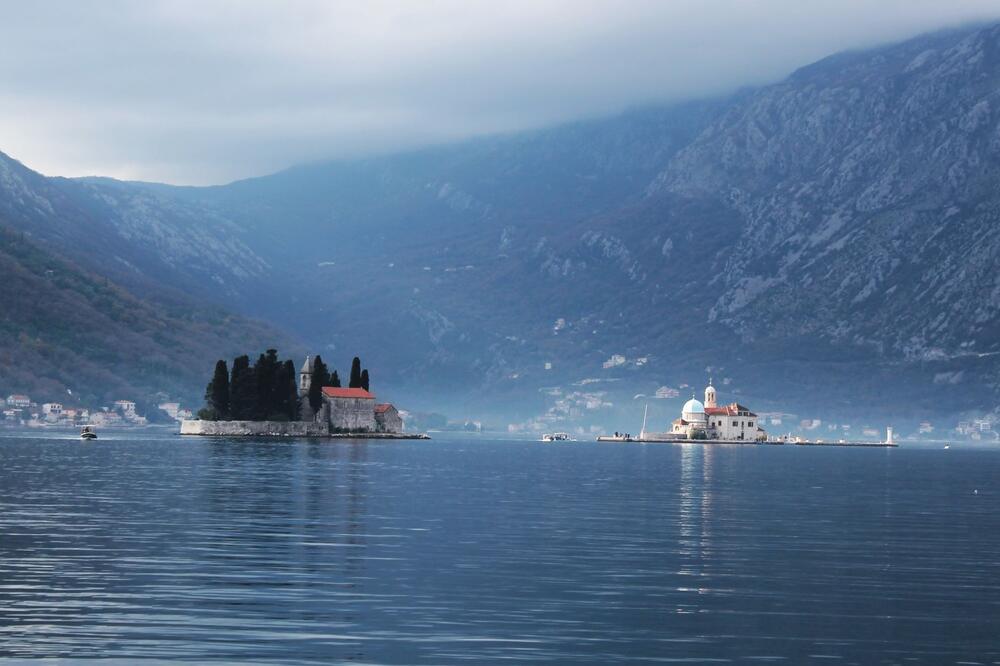Some places I’ve visited many times, places that always amazed me, yet I never dared to tell their story, fearing I wouldn’t do them justice. One such place is Perast, to me the most original location along our Adriatic coast. After much hesitation, I decided to share my impression of this once-powerful town, now bustling with tourists from around the world.
Perast stands out for its maritime history unmatched by any other coastal town in Montenegro. Historical records show it had a shipyard from 1336 to 1813, and it was home to a renowned Maritime School where even Russian princes trained under Marko Martinović, a sailor, mathematician, and exceptional educator. Thanks to its celebrated sailors, Perast flourished during the 12th and 13th centuries, with many of its buildings dating back to that era.
The Islands of Perast
Montenegro's coastline has few islands, and two of them are right across from Perast. Due to my habit of visiting southern Montenegro off-season, I often struggled to find a boat to take me to Our Lady of the Rocks. Once, when I managed, the church was closed due to a lack of visitors. However, in recent years, there’s always someone willing to take you there, though I’m unsure if the church is always open.

Our Lady of the Rocks is an artificial island. Legend says it was created in the late 15th century when locals decided to build a church where the island now stands. At that time, it was merely a reef (Škrpjel), so they threw rocks into the sea every time they passed until enough land was formed to construct the church. Over time, decommissioned sailing ships were also sunk there to aid the process. The church, which shares the island’s name, was built and expanded over nearly a century. Today, it serves as a museum and gallery, featuring artwork by Tripo Kokolja, a baroque painter from Perast.
The church is adorned with silver plaques gifted by sailors or their families as a plea for safe journeys or as thanks for safe returns. Although it is a Catholic church, sailors of all faiths sought the intercession of Our Lady of the Rocks. Inside are archaeological collections, paintings, and fascinating handcrafted items, including an unfinished tapestry by Jacinta Kunić. This Peraštanka used her own hair, which turned gray over the years, while waiting for her sailor husband, who never returned.

Close to the church is the Reconciliation Hall, where disputes were settled centuries ago, and the most photographed feature – a stone table supported by two colossal figures.


Just 115 meters away lies the natural island of St. George, home to a Benedictine monastery from the 12th century and a local cemetery. This island is not open to tourists.

Exploring Perast
Perast is most beautiful when viewed from the sea. This perspective highlights its many church bell towers, palaces, and surrounding mountains that enhance its charm. After the church visit, we wandered the town again, finding it always slightly changed, with more restored buildings and a few yet untouched.

A notable spot is the square near the shore, featuring busts of Perast’s three most famous figures: Admiral Matija Zmajević, Marko Martinović, and Tripo Kokolja, who contributed immensely to the town’s historical prominence.

Walking through Perast’s narrow streets lined with stone palaces is a delight. However, the tightly packed architecture makes it difficult to capture good photos. Signalization could help guide tourists and prevent them from wandering into private courtyards.
Behind the islands, a newly built settlement disrupts one of the most beautiful views of our Adriatic coast. Photographers must carefully frame their shots to exclude this modern development.

The Fašinada Tradition
The tradition of throwing stones to expand the island continues to this day. Every year on July 22, before sunset, a procession of decorated boats brings stones to Our Lady of the Rocks. This ritual, which has continued uninterrupted for about 500 years, is called Fašinada. Interestingly, only men are allowed in the boats.

While I might have missed mentioning some historical and cultural details, my intention is to inspire those who haven’t yet visited Perast and Our Lady of the Rocks to do so as soon as they can.

Perast is located around 12 km from Kotor, 95 km from Podgorica Airport (Montenegro), 23 km from Tivat Airport (Montenegro), 68 km from Ćilipi Airport in Dubrovnik (Croatia), and 211 km from Tirana Airport (Albania).
Translation is AI genarated
Bonus video:






